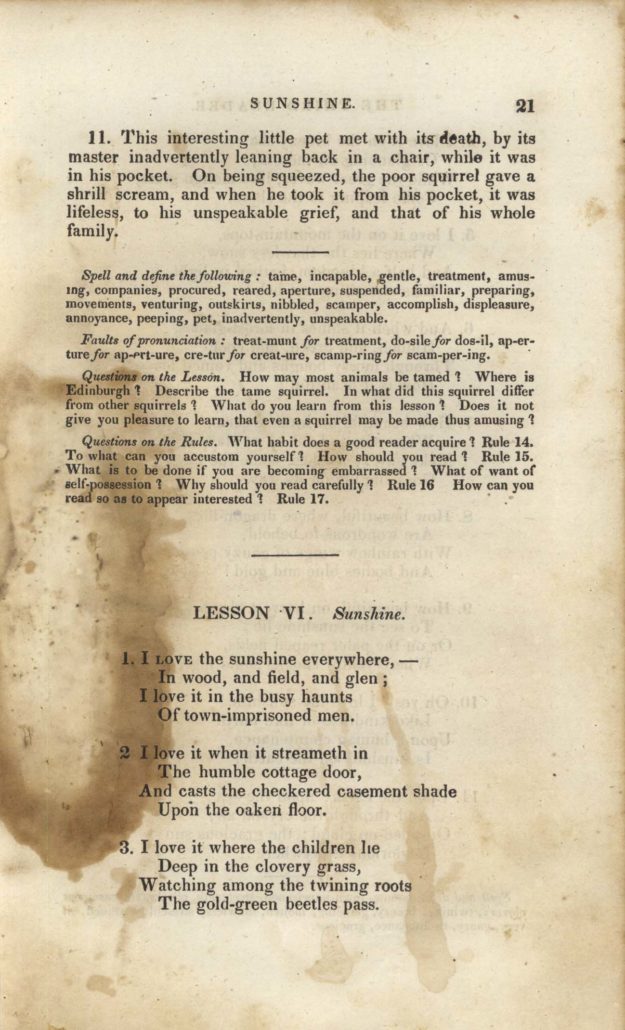
Digital Document Restoration
Learn
What is Digital Document Restoration?
Digital document restoration is a process that allows your manuscripts and records to be viewed with their original quality without further compromising the condition of the physical material. The process of restoring a document digitally includes a range of variables dependent on the condition of the document and the desired final image quality.
Historical documents fall subject to the elements over time: boxes can be forgotten in moist basements or dusty attics, while natural disasters cause damage to otherwise well-preserved manuscripts. Even pristine collections can suffer accidents.

Unlike restoring the physical document itself—which can be difficult, expensive, or downright impossible—restoring a document digitally uses scans of the original material and allows skilled archivists to restore the image instead. Sophisticated scanners and software, in combination with the efforts of careful digital archivists digitally remove spots, discoloration, stamps, handwriting, and other marks to make this kind of restoration possible.
Restoration isn’t limited to standard markings. Read about a cat’s unwanted contribution to history and how Anderson Archival removed it—digitally!

How Does Digital Document Restoration Differ from Document Digitization?
The short answer is this: a digitally restored document should look as similar to the original material as it appeared at printing, eliminating obscuring visual lines, mold damage, water damage, broken text, and inserting missing text, essentially, cleaning the document to its original quality. Another less hands-on option is to present the document as-is, damage and all. This option keeps the document digitized but not restored.
What Factors Affect Digital Restoration?
There are a handful of incremental steps involved in digital document restoration, depending on the material you wish to digitize and how you want the final digital product to be utilized. Newer documents, like stored office records, may not require much restoration. When evaluating the effort involved in restoring digital documents, an archivist might ask these questions about the physical material:
- How old is the document?
- What is the document made of (parchment, lightweight paper, stationery, cardstock, photographs, etc.)?
- What is the condition of the document?
- How extensive is the collection?
- What is your vision for the collection and how would you like it to be shared?

Is having a digitally restored collection important to you?
Digitally restored documents can be reprinted on high-quality paper, ensuring physical access to the original information. These can be securely and beautifully bound, preserving the aesthetics of a shelved collection without further damaging originals or making republishing and selling of these enhanced copies easy.
How are Documents Digitally Restored?
When done correctly, scanning the physical document does no damage to the original material. First, the archivists conduct a page by page review. When papers get shuffled during moves or when multiple people are using documents for research, it’s easy to misplace pages. This step ensures that each page is documented and none are missing or out of order.
Each page is also checked for quality and any damage. Is there a tear in a corner or is some text barely legible? This phase is for documenting anything that might hinder the next step. If a page has a tear, it should be repaired with archival tape and it should absolutely not be fed through a scanner feed. If a page has light text, the scanner’s settings should be changed. Digital archivists will note any missing or damaged text as well. The pages are then scanned.
Once the pages are scanned, archivists carefully examine the images, and then perform image cleanup. During this stage of digitization, the images undergo extreme scrutiny and notes are made on anything that could be improved on the image. Per your specifications, archivists can remedy many image problems, whether it’s smeared text or lines from wrinkles on an old book page.
At this point, our archivists bring the collection into the best condition for your needs. Digital document restoration can take many forms. Is your goal to present the collection as it would have appeared at the time of publication? Or perhaps you’d like to display the document as it exists now, flaws and all. The process for restoration is based on these different end goals. Archivists will work with you to decide on the most effective way to digitally restore your document according to your intention and needs.


Why Should You Digitally Restore Documents?
Document restoration is an important step in the digitization process. Simply scanning documents doesn’t always prove useful or practical for a digital collection, as the quality of scans may not be consistent or useful.
If you plan to use your newly-digitized collection for research or display, any damage to the original documents could impede the purpose you had in digitization. Digital document restoration manipulates the scanned images to repair damage, remove marks or splotches, and create an easy-to-read copy for future use, on the computer screen, or printed and bound. Digitally restored documents also enhance the OCR process, making results more accurate.
To the left, this digitally-restored page shows color correction and the removal of numerous water-damaged spots that obscured the text. Page from Cobb’s Juvenile Reader, No. 2. Copyright 1831.
What are the Benefits of this Newly-Restored Digital Collection?
The number one reason to digitally restore documents is to have backups in case a disaster befalls the originals. While losing any original document, especially an irreplaceable document, is incredibly unfortunate, not having a copy is even more detrimental. Restored digital documents make access, research, and sharing easy.
Subscribe to Our Newsletter
Digital preservation is about connecting to history. We do our best to bring you the important news and personal stories you’re interested in. We’re always looking for article ideas. Come learn with us!




